As a dentist, I commonly see people with unhealthy bleeding gums. I always recommend flossing once every day from the age of 12 to prevent gum disease and decay. [1] Healthy mouths lead to healthy people.
I’ve created a simple guide to help you floss effectively, as many people struggle with their technique. If you’re new to flossing, or need a refresher on how to do it correctly, read on to learn how to floss properly.
We’ve also written articles on the advantage and disadvantage of using Interdental Brushes Vs Floss, and for those of you who wear a fixed dental appliance we can also recommend the Best Floss for Braces.
Step-by-step instructions on how to floss
Step 1: Break off a length of dental floss

Start with 12-18 inches of floss, or the length of your forearm
Make sure you start with a long enough section of floss. If it’s too short, you won’t be able to hold it effectively.
Step 2: Wind it around your middle fingers

Wrap the floss ends around your middle finger on each hand, until you’re left with a short length in the centre. This should be 2 inches, or roughly the width of your front 4 teeth.
Step 3: Keep it taut
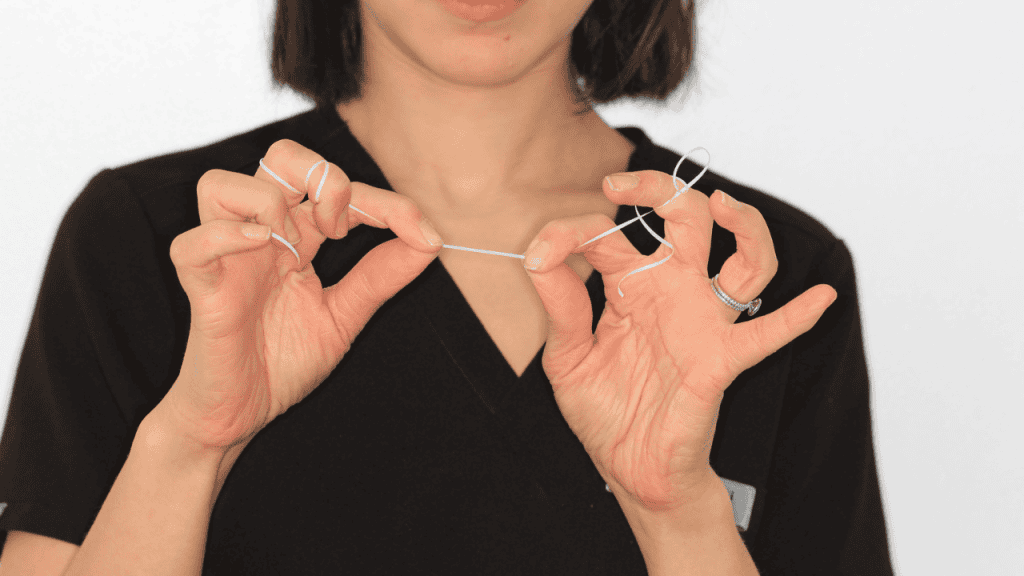
Hold the floss tightly on each end, between your thumb and index fingers. This will help you manoeuvre the floss between your teeth
Step 4: Guide floss between teeth
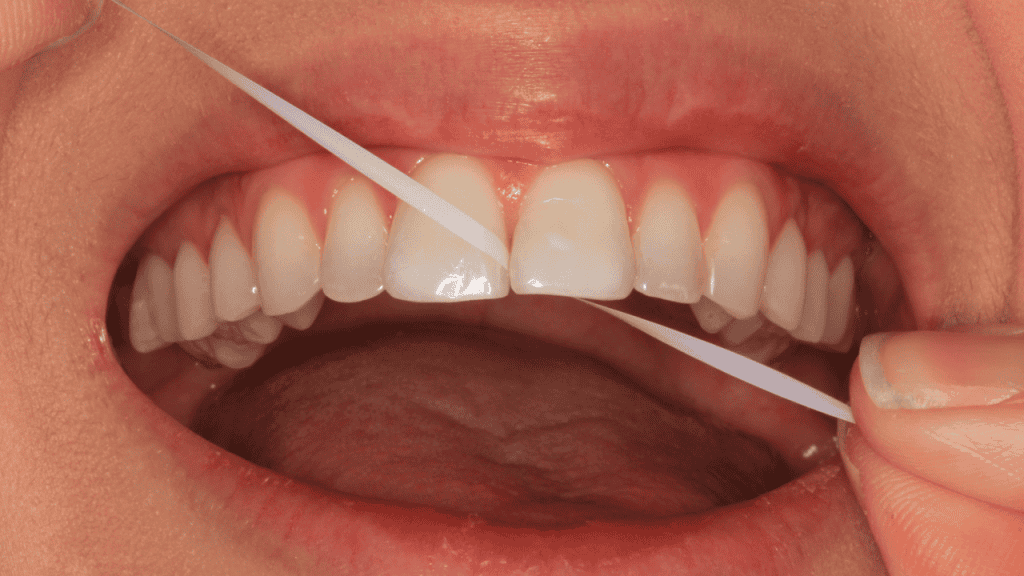
Gently position floss between your teeth and wiggle up to the gum margin
Slide your jaw to one side giving you more room to reach teeth at the back of your mouth
Opening too wide makes it harder to access the back teeth
Step 5: Curve floss in to a ‘C’ shape
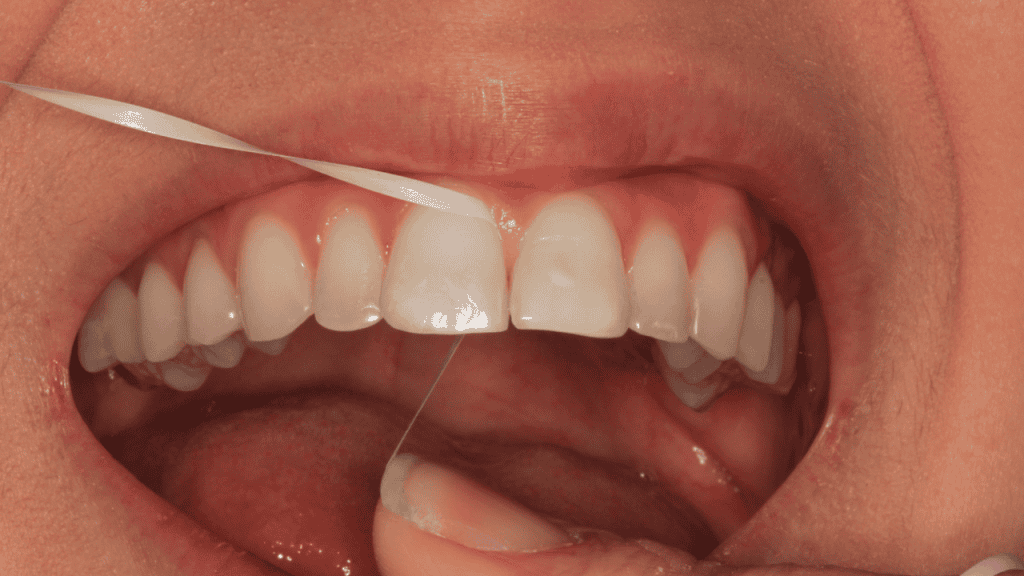
Holding the floss tightly against the sides of each tooth, create a ‘C’ shape to guide it beyond gum margin
Don’t apply too much vertical pressure to your gums, as you could hurt them.
Inflamed gums may bleed when flossing, especially if you’re new to this. Don’t worry, regular flossing will help to remove plaque build up and lead to healthy gums.
Step 6: Slide up and down along contact points
Use a gentle rubbing motion with the floss along the length of each tooth.
Don’t use a sawing motion as this could cause irritation and bleeding
If there is hard build up between your teeth, you won’t be able to remove it with flossing alone. Visit your dentist/hygienist for a scale.
Step 7: Repeat
Do this for every contact point, using a clean section of floss. With an effective technique, you can check to see soft plaque has been removed.
Don’t forget to floss the back of your last molar, as this area can be particularly prone to plaque build up
Throw floss away after use, it’s not reusable.
How to floss when you have braces
It is particularly important to have excellent oral hygiene when undergoing brace treatment. Braces make it more difficult to clean your teeth effectively, and could lead to decay and gum disease.
Using Superfloss
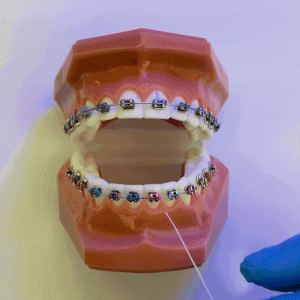
Superfloss is proven to be an effective tool to remove plaque when wearing braces. [2] It has a hardened tip that you position between contact points.
Step 1: Thread it through your teeth and pull through the other side.
Step 2: Gently guide the floss down past the gum margin and up to the wire. Make sure the floss is held tightly to each tooth surface
Step 3: Pull the floss forwards through the teeth, allowing you to clean behind the wire and brackets.
You could also use Interdental Brushes
They are reusable and available in different sizes (0.4mm – 1mm). Interdental brushes are a great alternative to flossing. They are used to remove plaque and debris behind your brace wire and around brackets.
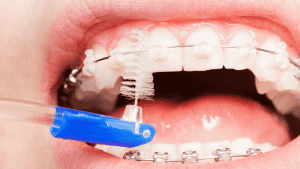
Types of floss
It is important to choose the right type of floss for your needs. There are several types which are listed below.
Tape
This is flat and broad, which has a wider surface area for effective cleaning. Good for: braces, spaces between teeth
Standard
Thin nylon floss. You can get waxed versions which are less likely to shred, and easier to slide between tight teeth. Unwaxed floss is recommended for people with wide spaces. Opt for flavoured floss for a minty fresh taste. Environmentally conscious options include plastic-free and BPA-free floss, such as silk. Good for: Crowded teeth.
Dental Harps

Has a handle for easy use. Good for: people with arthritis or other hand mobility issues
Interdental Brushes
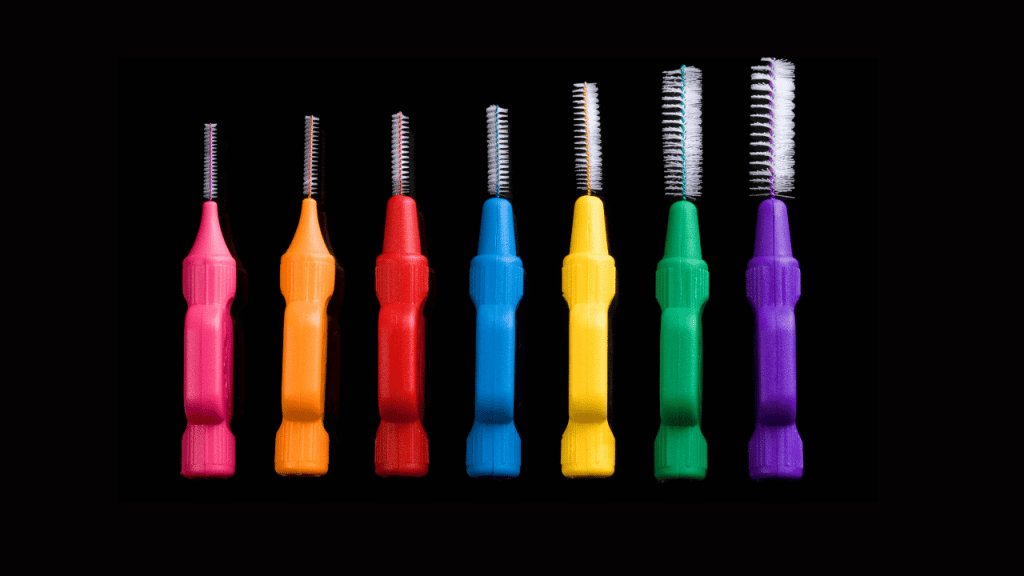
These are reusable aids that come in a variety of sizes. Use the largest size that will fit comfortably between your teeth. Plaque removal is very effective. Good for: People with wider spaces caused by gum disease, or receded gums.
Water Flosser

Uses a water jet to effectively remove plaque. Good for: Those who struggle to use floss due to reduced dexterity
Superfloss
Superfloss comes in pre-cut lengths, with a hardened tip. It is useful to help guide floss underneath bridges, or around brace wires. Good for: Braces, bridges
Common mistakes when flossing
Flossing after brushing. When you floss you dislodge plaque from between your teeth. You need to brush afterwards, to remove this from your mouth.
Stopping when you see blood. Healthy gums do not bleed. If you see blood when flossing. do not be discouraged. This is common among people who have not flossed regularly and will usually subside within a few days of flossing.
Not cleaning under gum line. Small pockets or spaces under gum line need to be reached to remove plaque.
Clicking floss between teeth. This does not remove plaque effectively.
So which floss is best?
The floss that I recommend for patients is the Oral B Satin Tape, due to its strength and ease of use. I also use this floss myself during dental procedures, and to check contacts between fillings I have just placed to ensure the area in between teeth is cleansable.
Remember: if your floss is tearing or shredding in a particular areas, its likely that the tooth will need professional attention, and you may need a filling replacing.
Also consider…
What should I do next?
If you notice bleeding when flossing, or you have hard calculus on your teeth you would benefit from professional treatment. Find a dentist near you.






